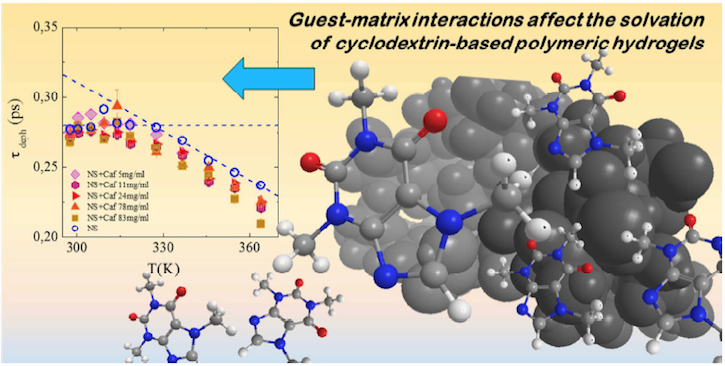Scientists test caffeine as a model system for developing and designing new hydrogels for biomedicine, cosmetics and environmental control
|Hydrogels are a special class of materials that have a particular three-dimensional structure, with internal spaces that can host guest molecules or water solutions containing active molecules. This structure allows hydrogels to absorb large amounts of water without losing their elasticity. Hydrogels, made of biopolymers like sugar chains, can be used as superabsorbers for cosmetics and medical purposes, such as wound-dressing, and even as scaffold for tissue engineering. They have recently attracted some interest as model systems for “smart” hydrogels that are able to react with their environment (e.g. human skin) in a programmed and intelligent manner or for drug delivery.

In this context, the working group around Barbara Rossi from the Italian CERIC facility, Elettra Sincrotrone Trieste, together with her co-workers from the University of Messina and Politecnico of Milan, have developed a hydrogel based on natural cyclodextrin – a particular derivative of glucose – that act as a nano-sponge. They recently published a study that investigates the mechanisms of entrapment, diffusion and release of guest molecules such as pharmaceutical active ingredients on these nano-sponges. As a model drug, they used the simple and well-known caffeine molecule. They used UV resonant Raman-Spectroscopy to analyse the structure of the model under different conditions. This method uses highly intensive ultra-violet light to monitor vibrations of the carbon atoms backbone within the nano-sponges. These vibrations are influenced by various factors, e.g. water uptake, drug loading and temperature.
For Raman spectroscopy, Rossi and her team used the CERIC IUVS instrument based at Elettra. They loaded the nano-sponges with various concentrations of caffeine at different temperatures. During their measurements, they discovered that caffeine significantly changes the temperature dependent properties of the nano-sponges. This shows for the first time that caffeine is not simply loaded into the structure of this special kind of hydrogel but actively changes the structure and the properties of the hydrogel. Furthermore, the molecular insights provided by UV-Raman spectroscopy for the first time allowed description and quantification of the caffeine induced structural changes within this type of nano-sponge. This valuable knowledge will enable further development of the dextrin-based hydrogels and will help in the design of new strategies to control the loading, diffusion and release rates of bioactive molecules inside hydrogels for future drug delivery applications.



